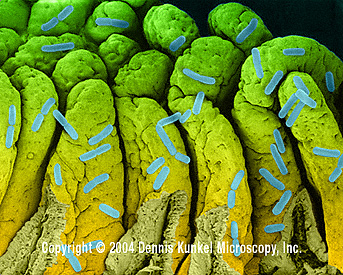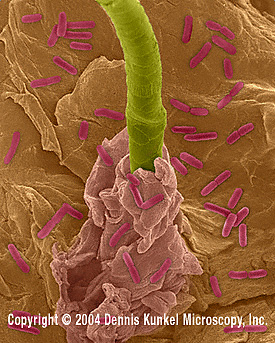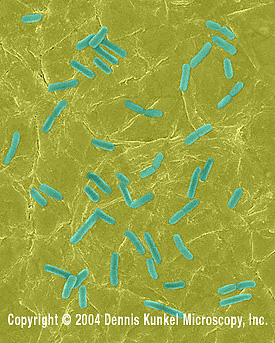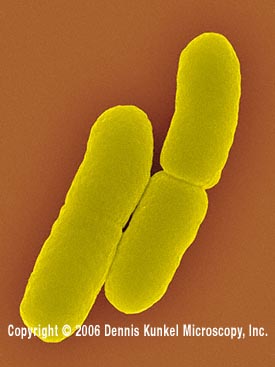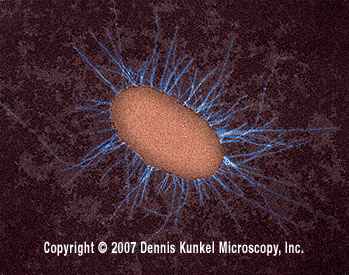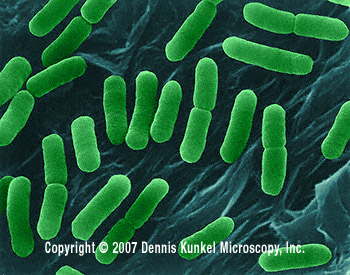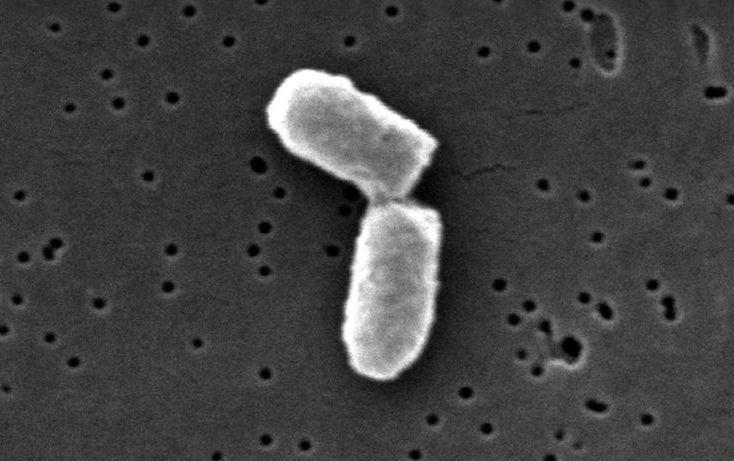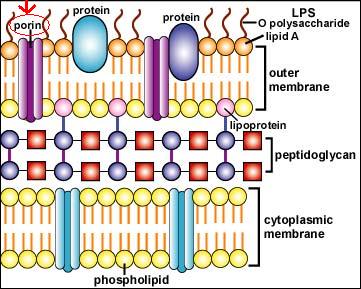Adaptation
How Has E. coli Adapted to its Environment?
As stated in the Habitat section, E. coli is mostly adhered to the walls in the GI tract of humans and warm blooded animals either by adhering to the mucus or the epithelium.
E. coli with flagella and fimbriae
©
Dennis Kunkel Microscopy, Inc. Used with Permission
E. coli are happiest when in an environment stabilized around 37oC with a neutral pH (~7). However, its environment is always changing and it uses many interesting ways to adapt to these various habitats. E. coli can sense changes in temperature, pH, certain chemicals, and osmolarity. Not only must it learn how to adapt to its environment, it also must learn how to compete with the immense amount of other bacteria that are present in its habitat. Mutations and selective advantages have allowed E. coli to adapt physically to these changes.
E. coli are very motile organisms, moving using petrichious flagella (see D below). There are a number of ways in which the E.
|
coli will use these flagella. When it senses a change in the chemical composition of its environment, it can either swim towards or away from them, depending on the possible use of these chemicals for cellular metabolism. This is also known as chemotaxis. This adaptation is especially helpful in |
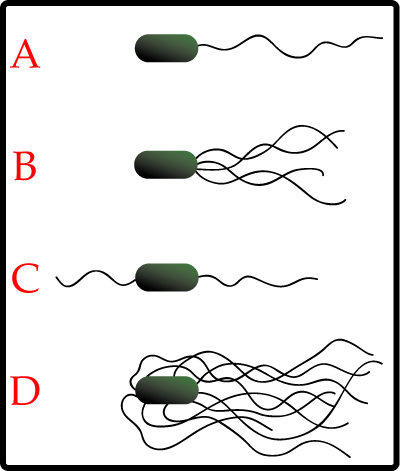 Types of flagella Photo from a Public Domain, Retrieved from Wikimedia Commons |
competiti on with other organisms in the
gut because it can utilize these nutrients whether they are at a
high or a low concentration. In order for movement to
occur, the bacteria utilizes its flagella by moving them in a
counterclockwise direction. If the bacteria attempted to
rotate its flagella in a clockwise direction, it would only
tumble in its place. When the E. coli has stopped
swimming, it could use its common fimbriae as a means of attaching to the cell
surface receptor of its host
on with other organisms in the
gut because it can utilize these nutrients whether they are at a
high or a low concentration. In order for movement to
occur, the bacteria utilizes its flagella by moving them in a
counterclockwise direction. If the bacteria attempted to
rotate its flagella in a clockwise direction, it would only
tumble in its place. When the E. coli has stopped
swimming, it could use its common fimbriae as a means of attaching to the cell
surface receptor of its host
In response to changes in the temperature or the osmolarity of the environment, E. coli utilizes its ability to physically change the diameter of the porins found on the cell membrane. If there are larger nutrient molecules present that normally are not, E. coli will enlarge the diameter of its porin to allow the molecule to enter the organism. This also works in reverse in that if there are inhibitory molecules present, E. coli will decrease the diameter of the porins.
Gram Negative Cell Wall
Photo Courtesy of Dr. Gary Kaiser, Used with Permission
Back to Organismal Biology Websites
Questions or Comments: Contact Justine Moder
©April 2008

